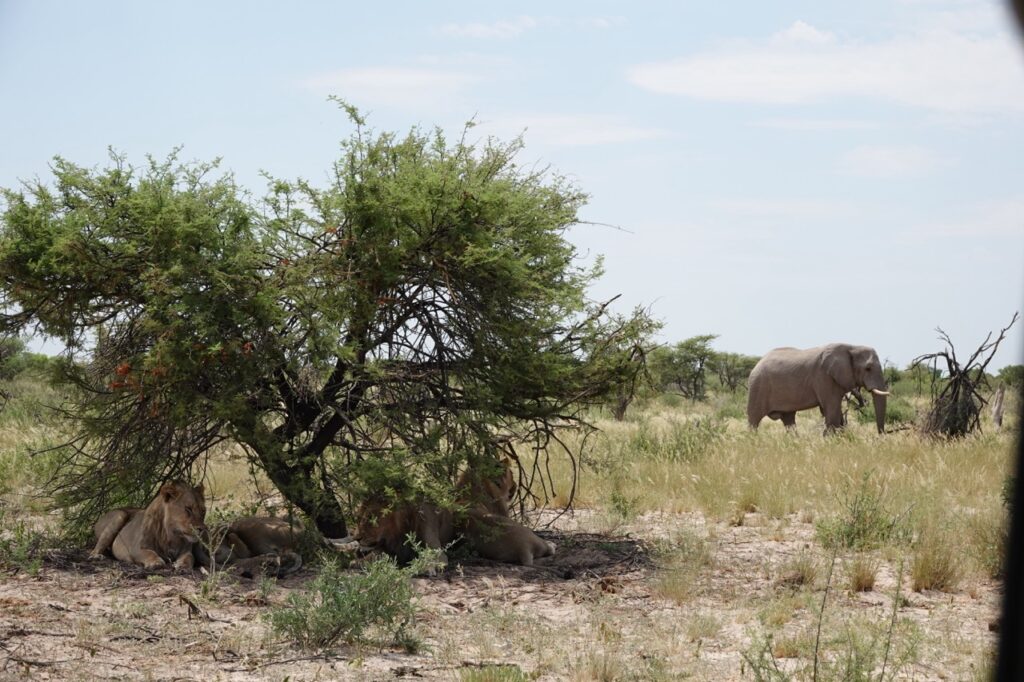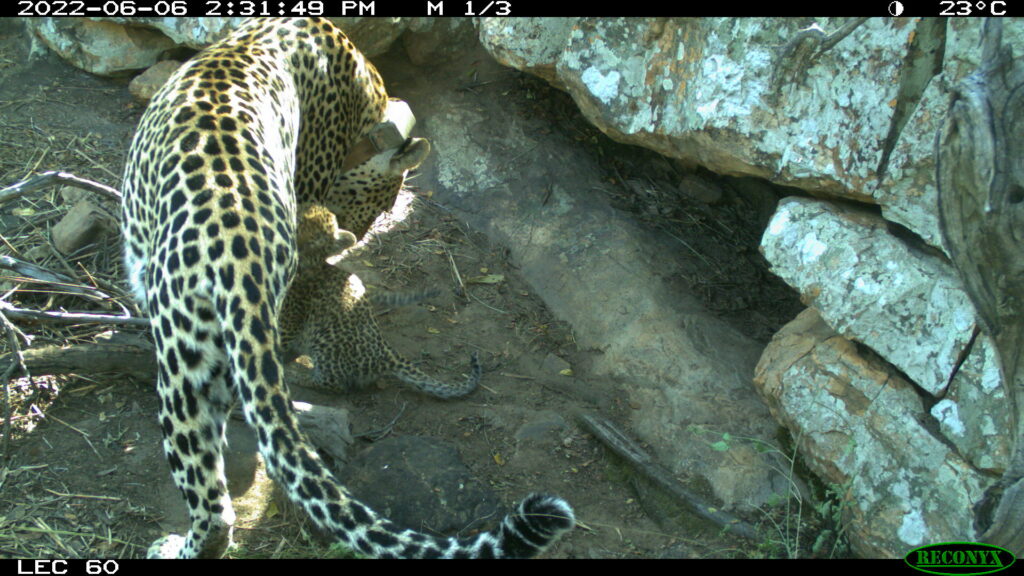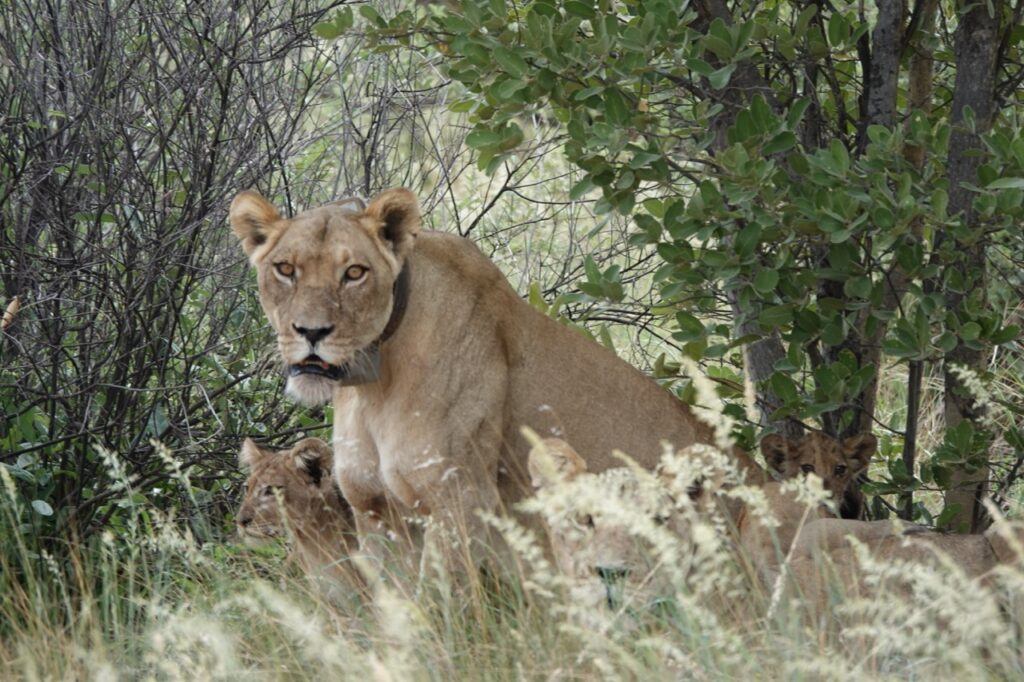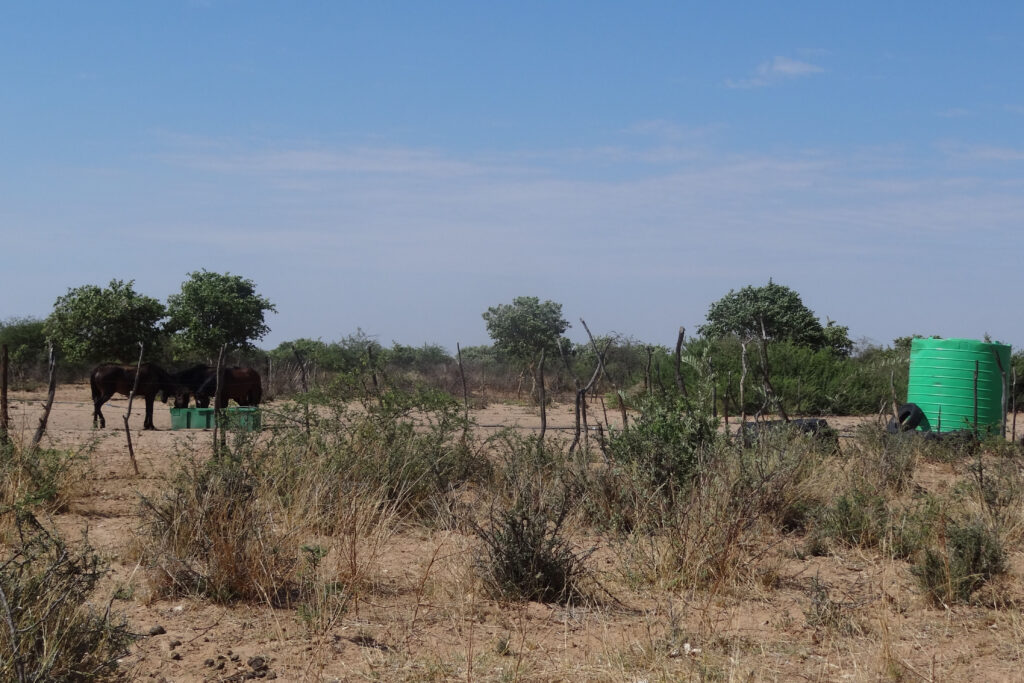
Predator populations are more than just numbers, they are living, shifting networks shaped by births, deaths, dispersals, and alliances. In the Kalahari, lions and leopards sit at the top of this web, and their population dynamics influence everything from prey behavior to vegetation patterns. Understanding how these carnivores live, reproduce, and interact is central to conserving both the species themselves and the delicate ecosystems they anchor. At Leopard Ecology & Conservation (LEC), our work on predator group dynamics combines state-of-the-art technology with field-based expertise to uncover how lions and leopards adapt to one of the harshest environments on Earth. By studying their long-term demographics and population structure, we can anticipate challenges, guide conservation policy, and support coexistence with local communities.
Studying Leopards: The Cryptic Predators
Unlike lions, leopards are elusive and solitary, making them particularly difficult to study. Traditional observation methods reveal only fragments of their lives, often missing the larger population picture. To overcome this, LEC has turned to camera traps, strategically placed throughout the study area to capture thousands of images that form the basis of population analyses.
Each leopard’s unique spot pattern functions like a fingerprint, allowing researchers to identify individuals across surveys. These data are then fed into spatial capture-recapture models, powerful tools that estimate population density, survival, and recruitment. In 2023, LEC completed one of the most comprehensive leopard surveys ever conducted in the Botswana Kalahari, with follow-up surveys in 2025 to track trends over time.
The results are crucial. By comparing data across years, we can determine whether populations are stable, growing, or in decline. This long-term perspective helps detect subtle shifts that might be invisible in shorter studies, such as declining cub survival rates or reduced adult recruitment, warning signs of ecological stress.
These camera trap efforts are not just about numbers; they also reveal behavioral patterns. Footage captures leopards interacting with prey, scent-marking territories, or even engaging in rare encounters with other predators. Together, these observations enrich our understanding of how leopards maintain their niche in a competitive environment.

Monitoring Lions: The Social Specialists
While leopards are solitary, lions live in prides, making their group dynamics an entirely different challenge to study. In the Kalahari, where resources are scarce and territories vast, prides are often smaller and more fluid than in prey-rich savannas. To monitor lion populations, LEC relies on a combination of spoor surveys, GPS collaring, and long-term observation.
Spoor surveys (tracking footprints in the sand) offer a non-invasive way to estimate population size and distribution across the vast landscape. They are particularly effective in the open terrain of the Kalahari, where fresh tracks are often easy to identify. These surveys are complemented by direct sightings and resightings of GPS-collared animals, allowing researchers to track individuals and groups with precision.

GPS collars play an especially important role in studying demographic dynamics. By following collared females and their prides, researchers can monitor cub recruitment and survival rates. This is vital because cub mortality is one of the strongest determinants of lion population stability. Data from 2024 revealed patterns in cub survival linked to prey availability, inter-pride competition, and even conflict with nomadic males.
Collar data also shed light on immigration and emigration, the movement of lions into and out of the study area. These shifts are important indicators of connectivity between populations. When dispersing males succeed in joining new prides, they inject genetic diversity into the population. Conversely, if emigration is too high, local populations risk becoming unstable.
Insights Into Population Dynamics
Through these combined methods, LEC has been able to uncover patterns that go far beyond headcounts. For example, long-term data suggest that leopard populations in the central Kalahari remain relatively stable, though subtle fluctuations in cub survival highlight the vulnerability of small populations in resource-limited environments.
Lions, meanwhile, show more complex dynamics. Prides expand and contract depending on rainfall cycles and prey availability, while young males face a high-risk period of dispersal that shapes pride structures across the region. These findings reinforce that predator populations are not static entities but fluid systems that respond to both ecological pressures and social structures.
Conservation Implications
Understanding predator group dynamics has direct conservation relevance. For instance, accurate population estimates allow wildlife managers to assess whether conservation measures are working or whether new threats are emerging. This is particularly important in ecosystems like the Kalahari, where climate change, land use, and human-wildlife conflict all exert growing pressure.
Camera trap data and spoor surveys provide baseline figures that can be used in regional planning, ensuring that protected areas are large and connected enough to sustain viable populations. Meanwhile, demographic insights from GPS collars help identify periods of vulnerability, such as when prides with young cubs are most at risk of livestock conflict.
By translating scientific findings into practical management strategies, LEC bridges the gap between research and real-world conservation.
Building a Long-Term Perspective
One of the strengths of LEC’s work is its long-term commitment. Populations cannot be fully understood through short-term snapshots. By maintaining datasets that span decades, we can disentangle natural cycles from human impacts. This allows us to detect gradual declines that might otherwise go unnoticed until it is too late. The 2023 and 2025 leopard surveys are a case in point. By repeating standardized surveys at regular intervals, we can track changes with confidence, providing one of the clearest pictures to date of leopard population health in the region. Similarly, decades of lion tracking have revealed how prides adapt to drought cycles and prey fluctuations, offering insights that extend far beyond the Kalahari.

The Human Dimension
Predator group dynamics are also intertwined with human communities. When lion or leopard populations expand into areas of livestock grazing, conflicts can arise. By monitoring group sizes, dispersal patterns, and recruitment, LEC helps predict where and when such conflicts are most likely. Sharing this knowledge with local farmers empowers them to take proactive measures, reducing losses and fostering coexistence.
Moreover, these studies highlight the cultural and ecological value of predators. Lions and leopards are more than research subjects, they are symbols of wilderness and integral players in ecological balance. Protecting their populations means protecting the integrity of the Kalahari as a whole.
